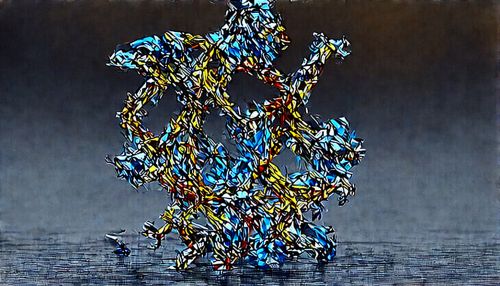Ring (mathematics)
Definition and Examples
In abstract algebra, a ring is one of the fundamental algebraic structures used in abstract algebra. It consists of a set equipped with two binary operations that generalize the arithmetic operations of addition and multiplication. Through this generalization, we are able to perform the arithmetic operations in a way that is similar to the integers.


For example, the set of integers with the usual + and × operations is a ring, as is the set of n-by-n matrices with real number entries, real numbers, and complex numbers.
Structure
A ring is a set R equipped with two binary operations + and ⋅ satisfying the following three sets of axioms, called the ring axioms.
1. R is an abelian group under addition, meaning that:
* (a + b) + c = a + (b + c) for all a, b, c in R (that is, + is associative). * a + b = b + a for all a, b in R (that is, + is commutative). * There is an element 0 in R such that a + 0 = a for all a in R (that is, 0 is the additive identity). * For each a in R there exists −a in R such that a + (−a) = 0 (that is, −a is the additive inverse of a).
2. R is a monoid under multiplication, meaning that:
* (a ⋅ b) ⋅ c = a ⋅ (b ⋅ c) for all a, b, c in R (that is, ⋅ is associative). * There is an element 1 in R such that a ⋅ 1 = a and 1 ⋅ a = a for all a in R (that is, 1 is the multiplicative identity).
3. Multiplication is distributive with respect to addition, meaning that:
* a ⋅ (b + c) = (a ⋅ b) + (a ⋅ c) for all a, b, c in R (left distributivity). * (b + c) ⋅ a = (b ⋅ a) + (c ⋅ a) for all a, b, c in R (right distributivity).
Types of Rings
There are several types of rings, each with its own unique properties and structures. Some of these include:
1. Commutative Rings: These are rings in which the multiplication operation is commutative, that is, for all a and b in the ring, a ⋅ b = b ⋅ a.
2. Ring with Unity: This is a ring that contains a multiplicative identity, that is, there exists an element 1 in the ring such that for every element a in the ring, 1 ⋅ a = a ⋅ 1 = a.
3. Integral Domains: These are commutative rings with unity, which have the additional property that the product of any two non-zero elements is always non-zero.
4. Division Rings and Fields: These are rings in which every non-zero element has a multiplicative inverse. If the multiplication operation is commutative, the ring is called a field.
Properties
Rings have several properties that are derived from their axioms. Some of these properties include:
1. Distributive Laws: The distributive laws for addition and multiplication in a ring are similar to those in the real number system.
2. Additive Inverses: In a ring, every element has an additive inverse. This means that for every element a in the ring, there exists an element -a such that a + (-a) = 0.
3. Multiplicative Identity: If a ring has a multiplicative identity, then it is unique.
4. Zero Product: If a and b are elements of a ring and a ⋅ b = 0, then either a = 0 or b = 0 or both, provided the ring is an integral domain.
Applications
Rings are used in various branches of mathematics, and they have numerous applications. In number theory, rings of integers are used to construct number systems that generalize the integers. In algebraic geometry, rings of polynomials are used to define algebraic curves and other geometric objects. In differential equations, rings of differential operators are used to study and solve differential equations.
